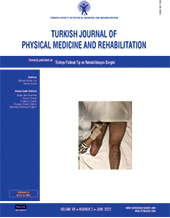The effect of adding robot-assisted hand rehabilitation to conventional rehabilitation program following stroke: A randomized-controlled study
Patients and methods: Between March 2012 and December 2012, a total of 33 stroke patients (21 males, 12 females; median age: 56 years; range, 38 to 73 years) were included in this prospective, randomized-controlled study. The patients were randomly divided into two groups as experimental (n=16) and control (n=17). Both groups received conventional rehabilitation for 3 h/day, for two days/week, totally for five weeks, while the experimental group received additional 1-hour robot-assisted hand therapy during each session. Outcome measures were the Fugl-Meyer Assessment, Box and Block Test, Nine-Hole Peg Test, Jebsen-Taylor Hand Function Test, grip strength, and pinch strength. All patients were assessed at baseline, at the end of the treatment, and three months after the treatment.
Results: Both groups showed statistically significant improvements in all the parameters (p<0.05). No significant differences were observed between the groups at any time points (p>0.05). The changes between baseline and three-month follow-up after the treatment revealed that adding robot-aided hand therapy led to greater changes in all the parameters related to functional activities and muscle strength, except for the Fugl-Meyer Assessment.
Conclusion: Adding robot-assisted therapy to conventional rehabilitation may provide greater changes in upper extremity rehabilitation of subacute stroke patients compared to conventional rehabilitation program alone.
Keywords : Functional activities, muscle strength, robot-assisted therapy, stroke

















